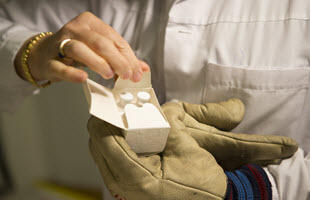 Interdisciplinarity
Interdisciplinarity Big Questions Require Teams That Step Across Lines
Until the early 1900s, scholars took it for granted that they could draw on any area of knowledge to inform their thinking on the major questions of the day. Medieval polymaths such as Hildegard of Bingen (medicine, linguistics, botany, art, philosophy and music) opened the door to Victorian scholars such as Temple Chevallier (astronomy, theology and maths) and Thomas Young (medicine, physics, music and Egyptology).
In the last century, however, the emergence of multiple disciplines and the exponential development of specialist knowledge, has discouraged such carefree grazing across academic terrains. The application of free-market ideologies to the higher education sector in the 1990s has positioned academic disciplines in competition with each other for resources.

This article by Tom McLeish and Veronica Strang originally appeared at The Conversation, a Social Science Space partner site, under the title “How to value research that crosses more than one discipline”
Big questions require teamwork
However, two things have become very plain. Today’s big questions require a genuine integration of diverse understandings: obvious examples include environmental change, social and political conflict, the use of genetic modification in medicine or agriculture. And sharing knowledge across disciplinary boundaries has other benefits: not only providing transformational fresh thinking about complex problems, but adding creatively to the strengths of single disciplines too.
A new report, prepared by publishers Elsevier for the Higher Education Funding Council (HEFCE), has found that interdisciplinary research is increasing in intensity in the UK.
There is a new impetus for this kind of research, both by individual scholars and, increasingly, through collaborative teamwork. The “medical humanities” are bringing historians, anthropologists, and literary scholars together with neuro-scientists and psychologists to work on issues such as why and how people hear voices. Scientists collaborating with medieval historians and theologians have been inspired to re-analyse perceptions of color as well as clarifying pre-modern science history. New ways of thinking about cancer are emerging from the joint efforts of physicists and medical scientists.
But how do we know what “good” interdisciplinary research looks like? Academics and those seeking to evaluate their work are hampered by a century of fragmentation and a lack of criteria with which to answer this question. The Research Excellence Framework (REF) continues to assess the outputs of research, such as journal articles, according to disciplinary categories.
Another recent report from the HEFCE showed that interdisciplinary research is now the major basis of required case studies used to demonstrate the “impact” of research. Yet a subsequent analysis of the REF revealed that academics remain anxious about submitting outputs, such as journals articles and books, for evaluation that don’t fit into a single discipline. The Elsevier report found that: “most interdisciplinary research has a lower citation impact than other publications.”
With little consensus about assessment criteria, funders of research have sometimes eschewed interdisciplinary programmes because of their lack of capacity to evaluate them. Universities are also unsure how to evaluate interdisciplinary career patterns, and many publishers prefer to stay in safe disciplinary territory. There is a paucity of peer reviewers with experience in this area. Interdisciplinary REF submissions, funding proposals and research outputs are often sent to academics whose response is either “I can only evaluate a bit of this” or “why doesn’t this do what I do?”
But interdisciplinary research is only worth the extra effort it requires if it adds up to more than the sum of its parts. And much of it does: there are exciting interdisciplinary projects forcing their way up between the cracks in the concrete across academia. The UK funding councils are onto this: many are now establishing working groups to seek better ways to evaluate – and value – interdisciplinary research. The Academy of Medical Sciences launched a working group on “Team Science” in 2014, and the British Academy recently began a major consultative exercise.
New ways of evaluation
Earlier this year, to contribute to this process, Durham University’s Institute of Advanced Study (IAS) invited interdisciplinary experts and representatives from across the funding councils to a workshop to draw up some criteria for evaluation and methods for applying them.
In a new report drawing on this collaboration, we have set out some criteria and questions to consider at each stage of the interdisciplinary research process, from project development right through to evaluation of output. We argue that it’s important to allow researchers time to work with academics in other fields and give them access to training if needed. We have also raised questions about what happens when one discipline dominates an interdisciplinary project, and how that can be justified.
Institutional support also needs to be improved, including making sure centers and institutes that carry out interdisciplinary research are adequately valued and resourced by university management. Our report also proposes a few changes to the REF, such as identifying interdisciplinary experts and trialling a dedicated panel to assess research that is deemed as crossing more than one academic discipline.
We are now even more convinced that imagining interdisciplinary research as a kind of superstructure creating “bridges” between disciplines is misguided, and merely affirms their differences. Interdisciplinarity lies not above the academy, but in its very foundations. In this sense it is supportive of – rather than a challenge to – more specialised areas of knowledge. ![]()































































































